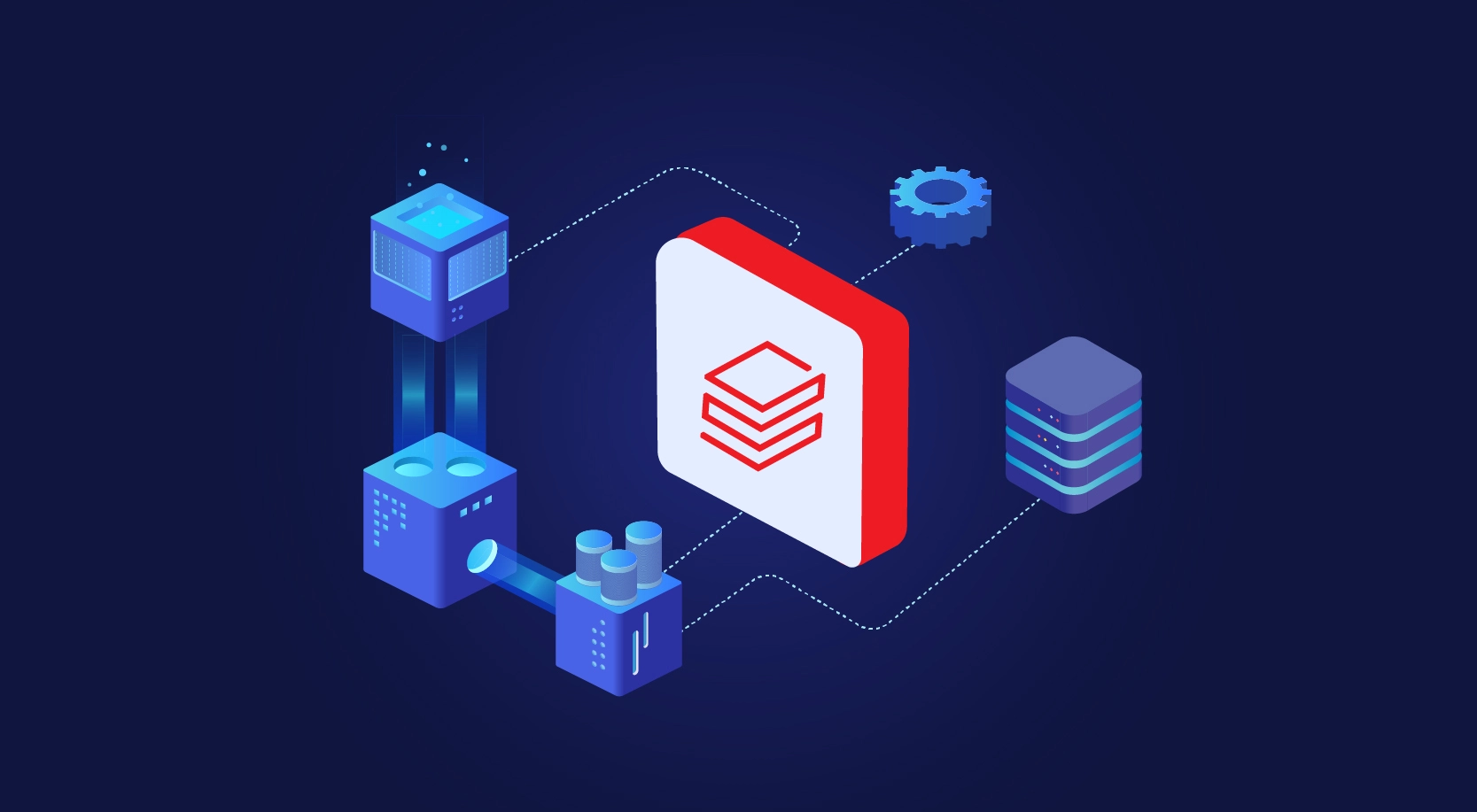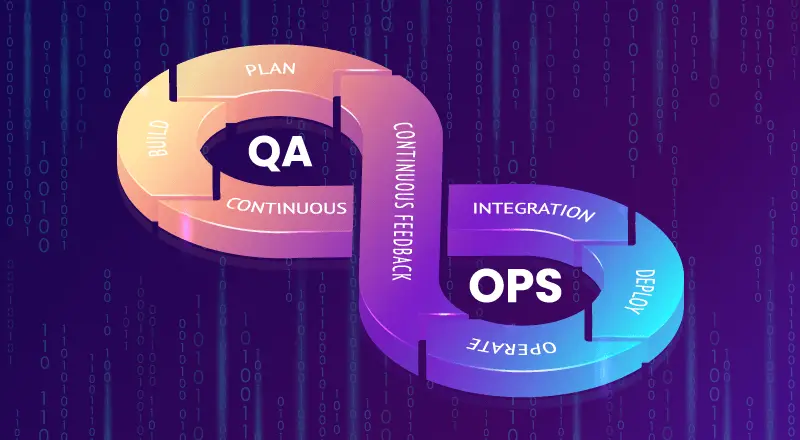
The Growing Use of QAOps
Previously, QA was solely focused on testing. That is no longer the case as QA teams are now exploring software quality throughout every development aspect. Many QA groups are applying QAOps as the demand for QA engineers increases. To ensure continuous delivery and integration, QA experts, Dev teams, and IT teams need to work together using a DevOps-based approach. They guarantee the entrance of the software changes in the production phase inside the CI/CD pipeline without quality issues.
QAOps Framework
QAOps is a framework that fuses the principles of DevOps. QAOps framework integrates the QA processes into the software operation to make a more seamless and integrated software operational model.
QAOps framework integrates the QA processes, automation, and QA Reporting dashboard with the Software Development Lifecycle (SDLC) process. QAOps takes the core ideas from continuous testing in DevOps, such as CI/CD and bringing together the siloed teams together to work on the pipeline and applies the same to QA process.
Basic Practices for QAOps Framework
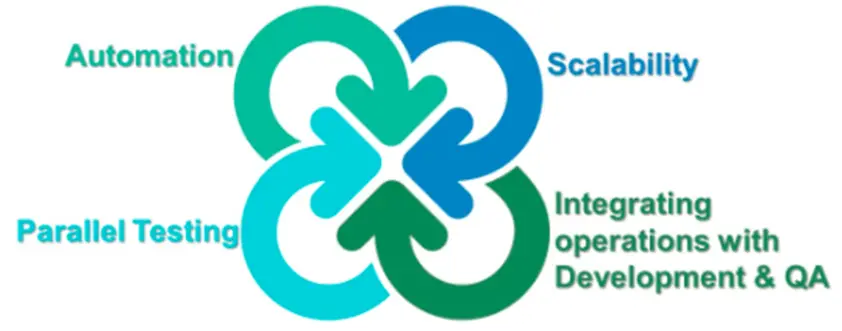
Automation Testing
This is one of the main pillars of the QAOps framework. They consume the quality time of the testers which can be effectively used to build automation test cases
The most obvious types of testing to automate are going to be regression test cases. They consume the quality time of the testers which can be effectively used to build automation test cases. Similarly, frequently used functionality in the product should also be automated. As your product grows in functionality and features, you don’t want your most-used functions to fail and create a bad experience for the users.
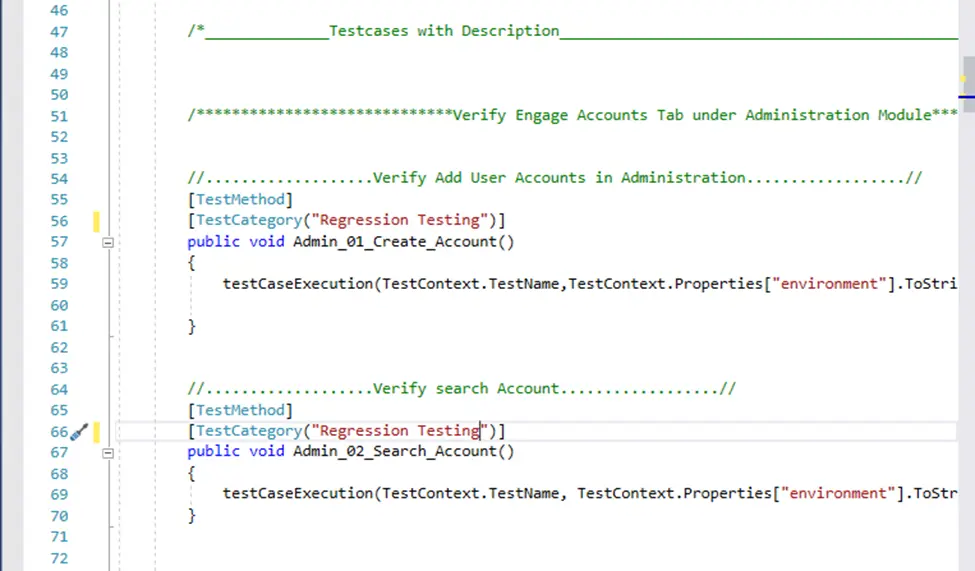
Test Scalability

Testing can help you learn your application’s user limit by assessing client-side degradation and end user experience as well as server-side robustness and degradation under heavy loads. There are many factors to consider when testing for scalability including:
- Response time
- Screen transitions
- Throughput
- Requests per seconds
- Network usage
- Memory usage
- The time it takes to execute tasks
The graph below illustrates the ideal relationship between memory usage and time. You should expect an initial ramp-up phase that quickly levels out and remains consistent. If you get a graph that looks like this, then you should have enough memory to handle all three stages of testing.
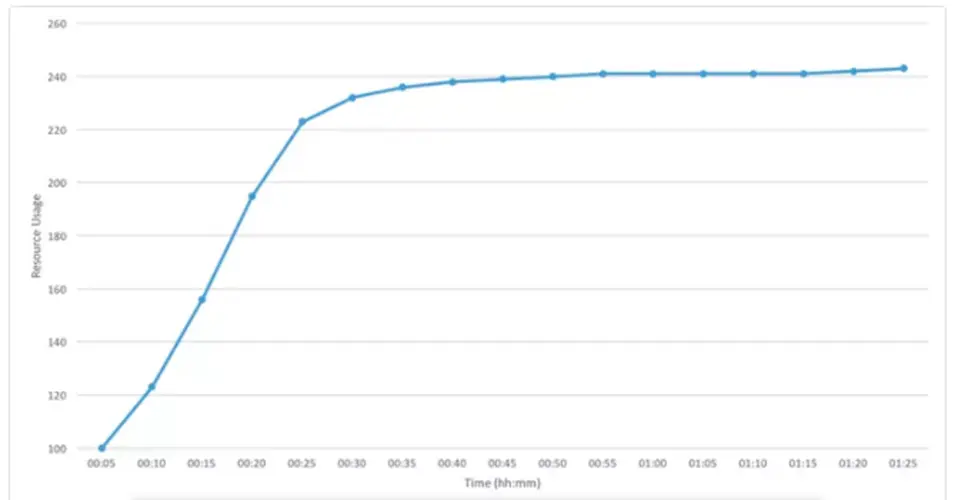
Parallel Testing
As part of the QAOps framework, testing should run quickly (in parallel with the delivery pipeline). Slowing down the testing efforts will directly affect the delivery process. Running automated tests will speed up the testing process, but not when they are being executed run in a serial manner. To overcome this issue, it’s important for testing engineers to run multiple tests at once (together) rather than running them one after the other.
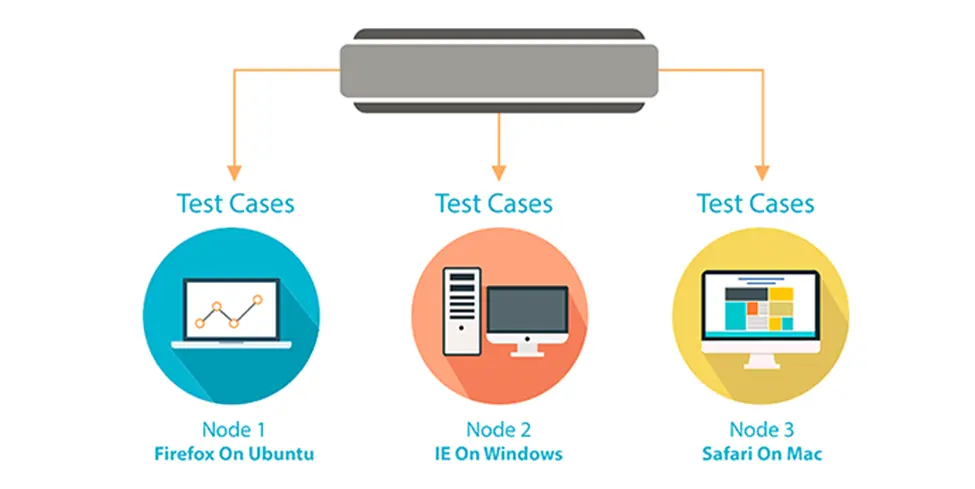
Integrating operations with Development & QA
The final practice to achieve a QAOps framework is to make the QA activities a part of the CI/CD pipeline. One of the easiest ways to integrate Development and IT operations with QA is to make developers write test cases and IT operations engineers to identify potential UI/UX problems with the web application through QA team assistance.
This gives the perfect opportunity for developers and QA engineers to collaborate and get a clear picture of the complete QA process. It also does not mean that QA engineers can take their hands off these processes and stay idle. This collaboration between the different stakeholders only makes the whole process of development and testing more efficient.
Make developers write test cases and IT operations engineers to identify potential UI/UX problems with the web application. Implementing shift-left testing.
Example:
Cross Browser Testing:
1. Multiple browsers -> 2. Multiple Browser Parallel runs -> Multiple features
Tools: Selenium – WebDriver, Grid
Use Cloud based tools to minimize the costs
QAOps vs DevOps
Although QA Ops is a derivative of DevOps, there are a few differences between the two.
- Quality at the core
- Cultural Shift

QAOps defines and streamlines the QA process, integrates QA processes into DevOps, and pulls QA teams out of silos and into the cross-functional product team.
Life Cycle of QAOps
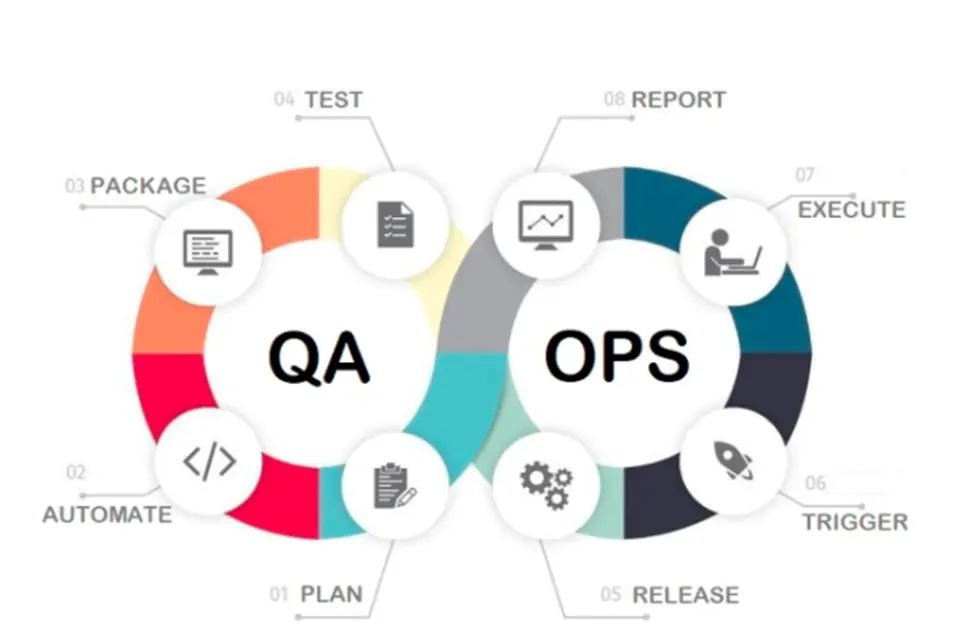
10 Best Practices of QA in a QAOps scenario
- QA and testing teams should be part of technical teams. They must move beyond manual functional testing and should focus their efforts on automation and testing strategies. QA becomes the enabler of quality across SDLC.
- Quality needs to be well-defined to meet requirements. Rather than trying to achieve perfection in software, QA should move towards focusing on accomplishing satisfying user experience within the given time frame.
- Metrics that measure quality must be laid down and measured. Such metrics should detect software defects early in the development cycle.
- Goals of individual and teams need to be optimized. Organizations need to strengthen necessary behavior and cultural shift by incentivizing quality assurance.
- Requirements need to be specific. QA teams should proactively involve in the requirements process to help and guide development teams towards proper direction.
- QA & testing should focus more on automated regression testing on critical areas such as key software functionality.
- QA & testing must move towards leveraging automation tools to automate testing wherever possible.
- Development, operations, and QA teams should be facilitated and encouraged to communicate, collaborate, and optimize their efforts.
- Continuous integration is the key to identifying defects early in the development lifecycle. For continuous integration to be implemented effectively, all the stakeholders must integrate their work often on a day-to-day basis.
- A fully automated continuous testing process needs to be integrated into the SDLC for a successful continuous delivery process that minimizes risks, reduces costs, and accelerates time to market by frequent releases.
Future of QAOps in Agile/Application Life Cycle
With DevOps already on the rounds for most of the companies in the current market scenario, it’s only a matter of time when QAOps becomes the next big thing. For that, they need to be prepared with a good understanding of how this process works. And this also goes out to the employees as well. The reliable set of QAOps processes guarantees faster delivery without compromising quality and hence, it will not only be beneficial for the software companies, but it will also enhance user-experience which is a win-win situation for both.
Steps in QAOps Process
Trigger
The most crucial part of the entire process is to trigger the application. This is done by building the right tests when the application is being integrated into the CI/CD pipeline. These tests must be appropriate for the technical changes in the application, otherwise, it may cause losing time in testing unnecessary areas. This is one reason why businesses should plan out the testing time, the other reason being reducing testing costs. While designing the triggering phase, you should keep three things in mind:
- Map out the tests at the initial stage
- Consider all types of testing, including integration tests
- Implement tests for code check and deployment.
Execute
When the trigger phase is approved, the next step is to execute. This step involves parallel testing for the framework along with the software quality to ensure that developers have everything they need to generate results as desired. This should go on along with the DevOps testing and the environment to avoid any obstacles in the QAOps process.
There are various key factors that determine the execution planning in the development life cycle:
- Parallel testing that kick starts the step
- Finding the right support for all the integration tests
- Checking on the scalability of the entire process
- Ensuring the tests are executed in the correct sequence as required
- Distributing the load of execution tests among various departments
- Ensuring that all the framework and infrastructure are available for execution of the entire process
Report
The final step in the process is reporting. This step includes doing exactly what it means- reporting the results of the above two steps. Just like any other process, reporting completes the entire QAOps process. All the work and planning followed in the trigger and execution phase is drafted into a report module for a complete brief. The module design requires detailed information on all the steps mapped and followed by the project team during the quality assurance process. It goes on record for the stakeholders to compare and analyze later.
For a better understanding of the report module design, the team requires to focus on some key areas:
- Snapshots as well as a detailed view of the entire project
- Focus on the root cause of the different steps involved
- Faster availability of specific results without confusion
- Ensure accessibility of the report whenever needed
- Complete details of the report so they can be referred again in the future debugging process
- Checking on the scalability of the report while handling a large volume of data
A good QAOps set-up is a boon for the software delivery pipeline. Businesses need to follow the entire process with proper planning and execution to leverage maximum benefit out of the process. When the three steps of the QAOps process is successfully achieved, it will lower the testing time and costs to a great deal and that too, for multiple projects at a time.
QAOps in Azure GIT Repository
Azure Repos is a set of version control tools that you can use to manage your code. Version control keeps a history of your development so that you can review and even roll back to any version of your code with ease. Azure Repos provides two types of version control: Git: distributed version control.
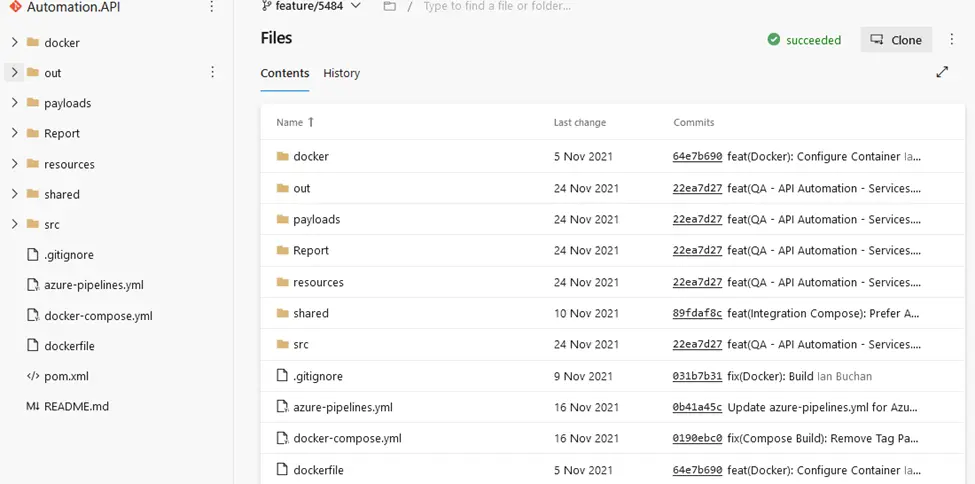
Like a Developer QA Automation Tester can raise the Pull Request (PR) to the build. Once the Review is completed user will be notified via email, so that user can complete and Merge to main Branch
- Reviewer can Approve
- Reviewer can Approve with comments
- Reviewer can Reject the Build
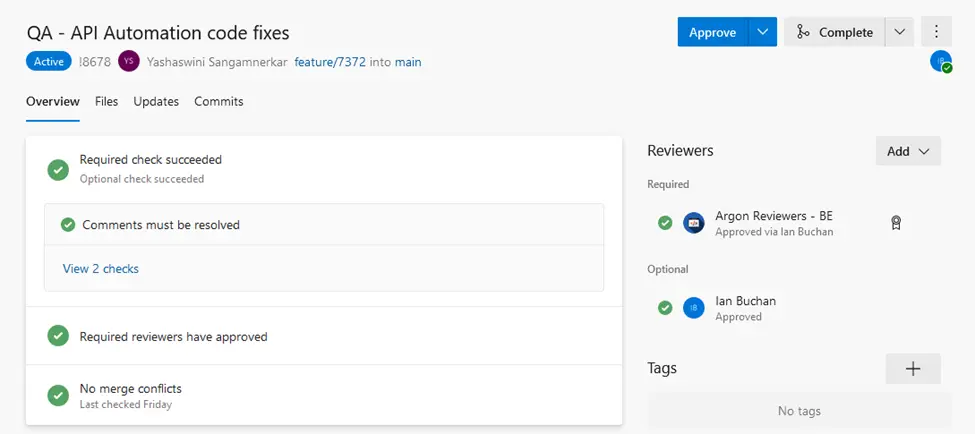
QAOps by Using Azure Pipelines
Azure Pipelines automatically builds and tests code projects to make them available to others. It works with just about any language or project type. Azure Pipelines combines continuous integration (CI) and continuous delivery (CD) to test and build your code and ship it to any target.

User can select Branch, category, Environment and Trigger the build Manually.
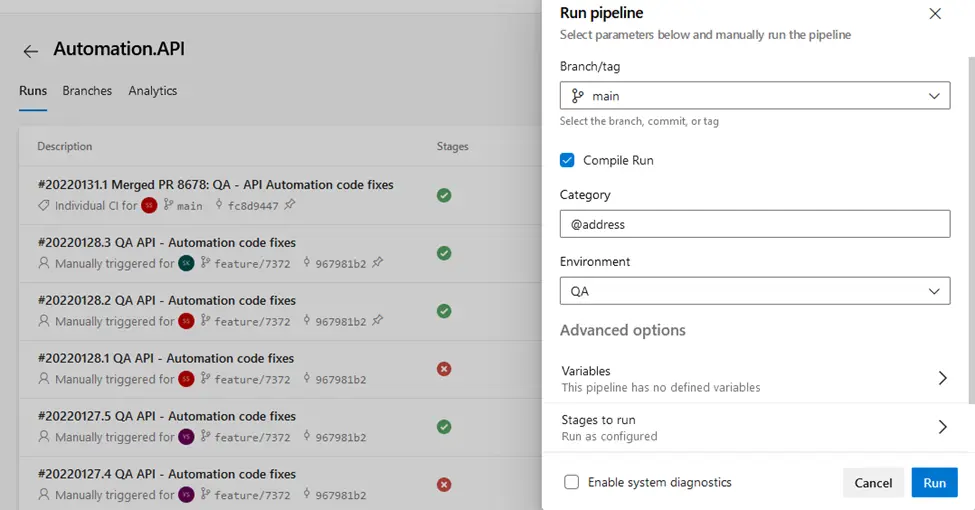
User can see the status of the build below:

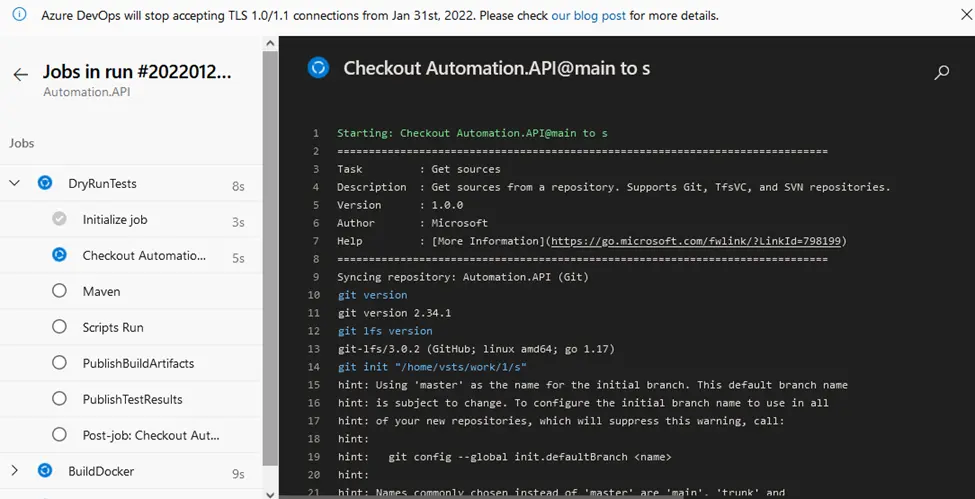
Once Run is completed user can download the Extent reports as shown below:
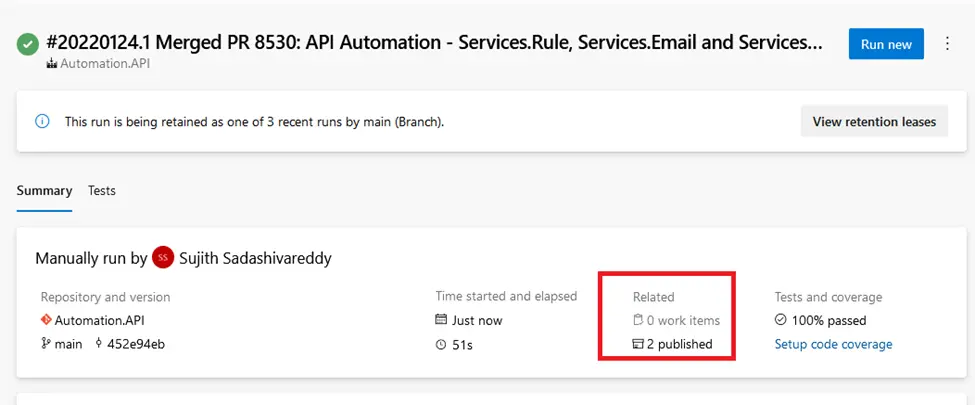
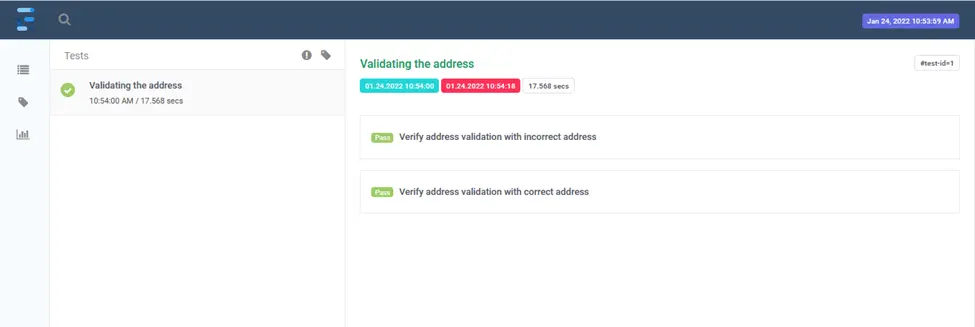
User can also Trigger build Periodically by providing the details as shown below:
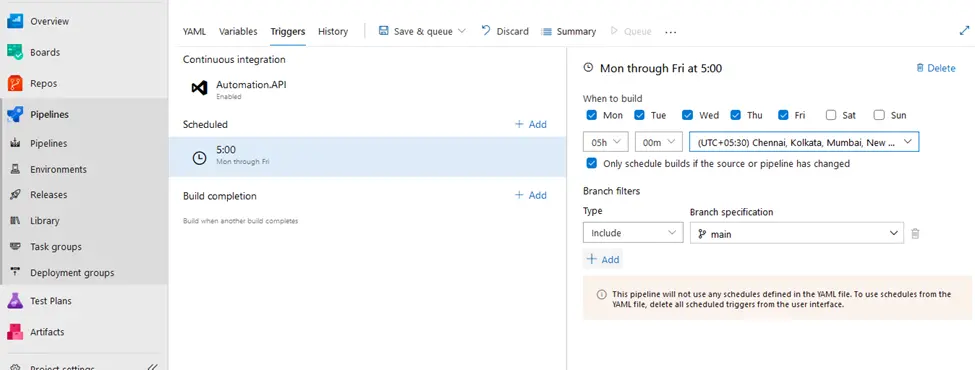
Once the Build is Triggered, user will be notified with build status via registered email Id as shown below:
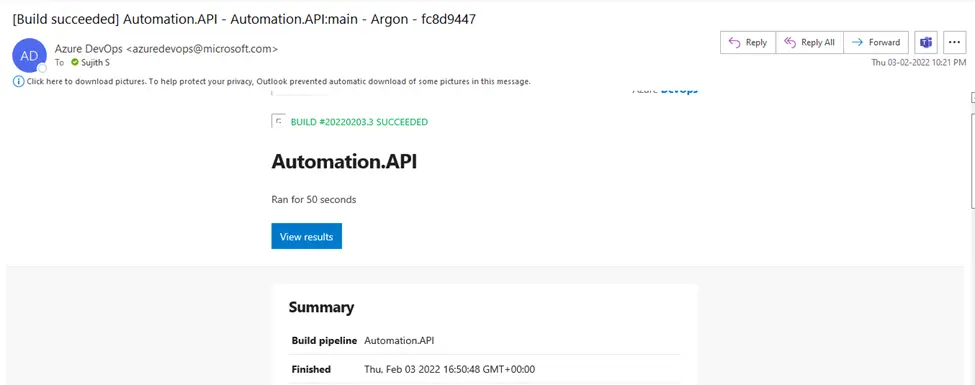
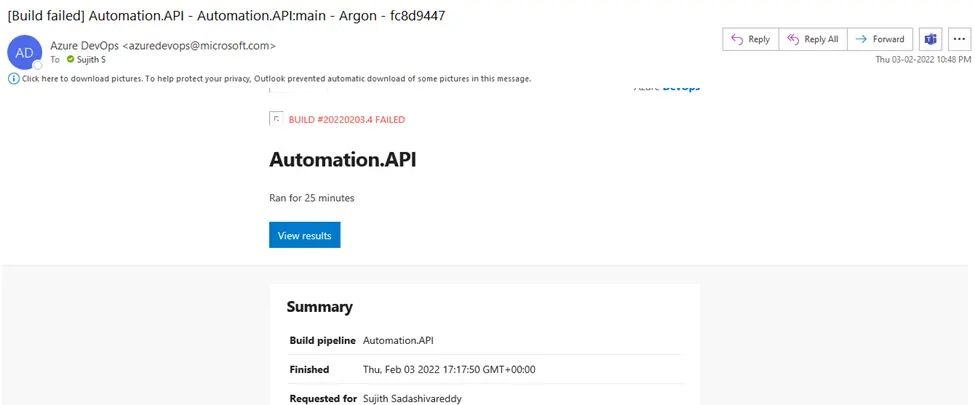
Advantages to apply QAOps Process into an organization
- Better Productivity
- Better Quality
- Increased Skill Level
- Better Customer Experience
- Decreases Test cycle time
- Faster time to market
Conclusion
QAOps, Continuous Testing in DevOps as we can also call it, when correctly designed and implemented, paves the road to faster software delivery. This gives the development teams the confidence for a faster time to market without any quality compromises. Reiterating the same point from above, putting QAOps into operation requires a lot of convincing to the stakeholders of the business. Once you are past this stage, it should pretty much be a smooth sail forward.

